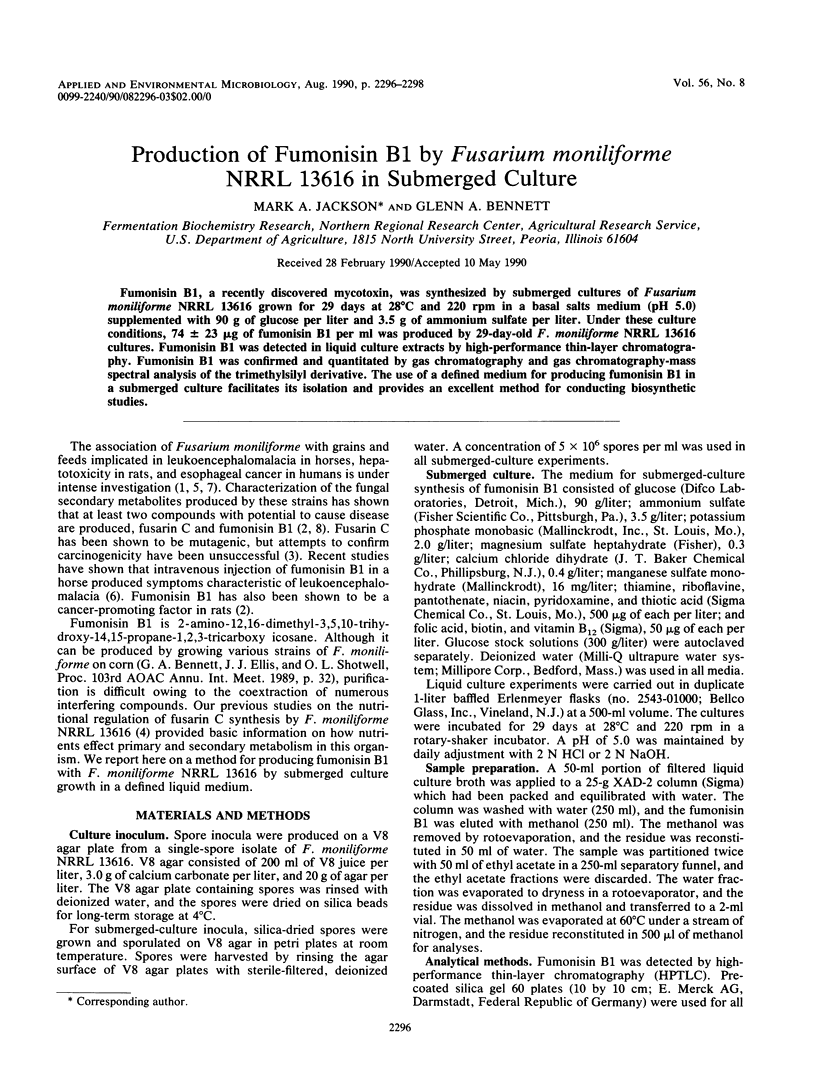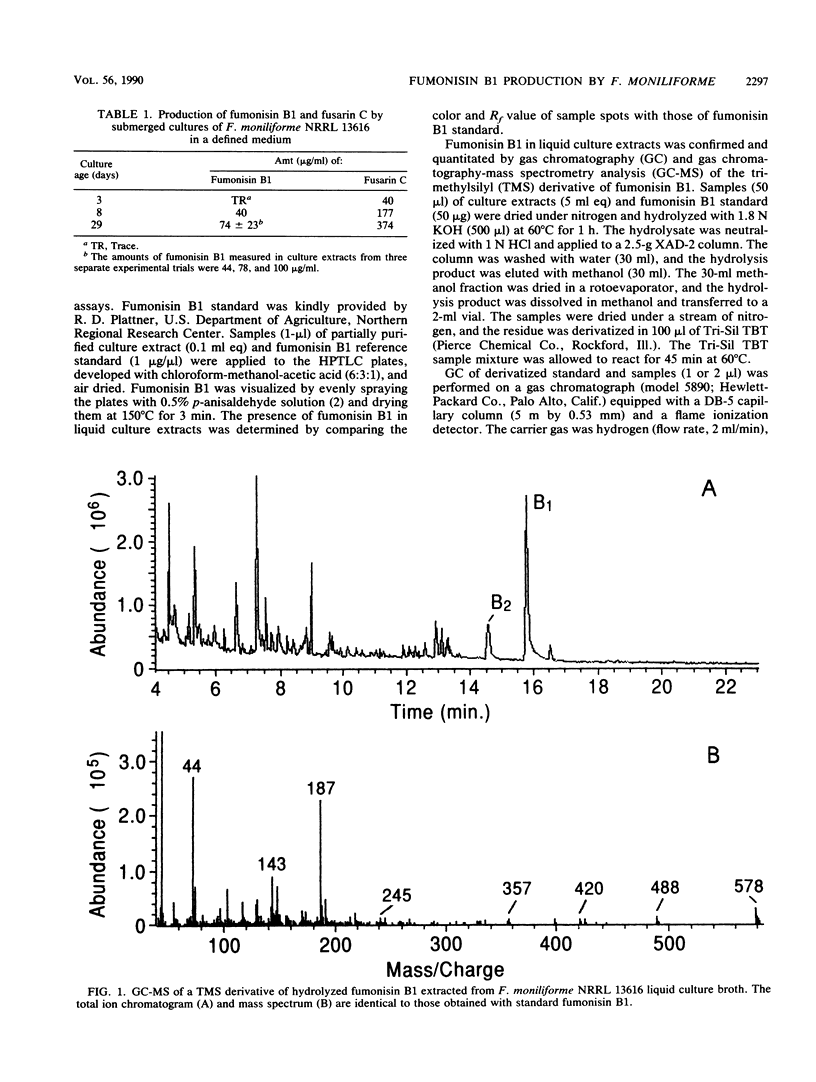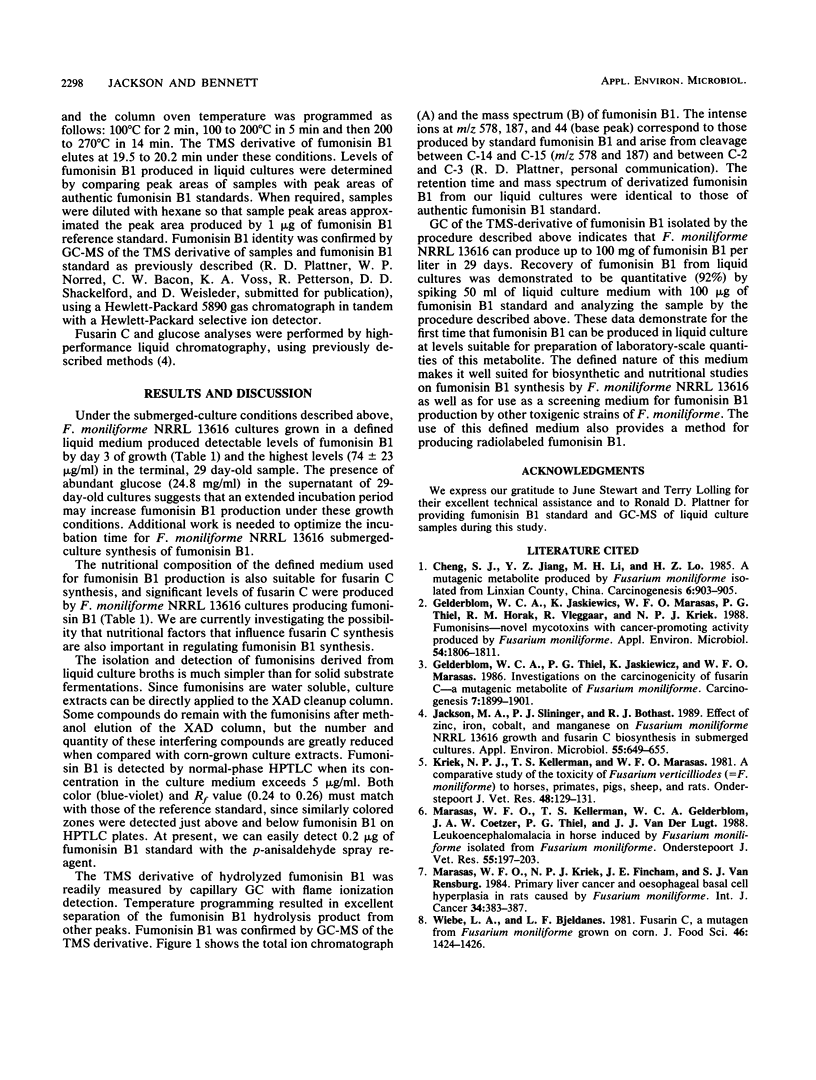Abstract
Fumonisin B1, a recently discovered mycotoxin, was synthesized by submerged cultures of Fusarium moniliforme NRRL 13616 grown for 29 days at 28 degrees C and 220 rpm in a basal salts medium (pH 5.0) supplemented with 90 g of glucose per liter and 3.5 g of ammonium sulfate per liter. Under these culture conditions, 74 +/- 23 micrograms of fumonisin B1 per ml was produced by 29-day-old F. moniliforme NRRL 13616 cultures. Fumonisin B1 was detected in liquid culture extracts by high-performance thin-layer chromatography. Fumonisin B1 was confirmed and quantitated by gas chromatography and gas chromatography-mass spectral analysis of the trimethylsilyl derivative. The use of a defined medium for producing fumonisin B1 in a submerged culture facilitates its isolation and provides an excellent method for conducting biosynthetic studies.
Full text
PDF


Selected References
These references are in PubMed. This may not be the complete list of references from this article.
- Cheng S. J., Jiang Y. Z., Li M. H., Lo H. Z. A mutagenic metabolite produced by Fusarium moniliforme isolated from Linxian county, China. Carcinogenesis. 1985 Jun;6(6):903–905. doi: 10.1093/carcin/6.6.903. [DOI] [PubMed] [Google Scholar]
- Gelderblom W. C., Jaskiewicz K., Marasas W. F., Thiel P. G., Horak R. M., Vleggaar R., Kriek N. P. Fumonisins--novel mycotoxins with cancer-promoting activity produced by Fusarium moniliforme. Appl Environ Microbiol. 1988 Jul;54(7):1806–1811. doi: 10.1128/aem.54.7.1806-1811.1988. [DOI] [PMC free article] [PubMed] [Google Scholar]
- Gelderblom W. C., Thiel P. G., Jaskiewicz K., Marasas W. F. Investigations on the carcinogenicity of fusarin C--a mutagenic metabolite of Fusarium moniliforme. Carcinogenesis. 1986 Nov;7(11):1899–1901. doi: 10.1093/carcin/7.11.1899. [DOI] [PubMed] [Google Scholar]
- Jackson M. A., Slininger P. J., Bothast R. J. Effects of zinc, iron, cobalt, and manganese on Fusarium moniliforme NRRL 13616 growth and fusarin C biosynthesis in submerged cultures. Appl Environ Microbiol. 1989 Mar;55(3):649–655. doi: 10.1128/aem.55.3.649-655.1989. [DOI] [PMC free article] [PubMed] [Google Scholar]
- Kriek N. P., Kellerman T. S., Marasas W. F. A comparative study of the toxicity of Fusarium verticillioides (= F. moniliforme) to horses, primates, pigs, sheep and rats. Onderstepoort J Vet Res. 1981 Jun;48(2):129–131. [PubMed] [Google Scholar]
- Marasas W. F., Kellerman T. S., Gelderblom W. C., Coetzer J. A., Thiel P. G., van der Lugt J. J. Leukoencephalomalacia in a horse induced by fumonisin B1 isolated from Fusarium moniliforme. Onderstepoort J Vet Res. 1988 Dec;55(4):197–203. [PubMed] [Google Scholar]
- Marasas W. F., Kriek N. P., Fincham J. E., van Rensburg S. J. Primary liver cancer and oesophageal basal cell hyperplasia in rats caused by Fusarium moniliforme. Int J Cancer. 1984 Sep 15;34(3):383–387. doi: 10.1002/ijc.2910340315. [DOI] [PubMed] [Google Scholar]


